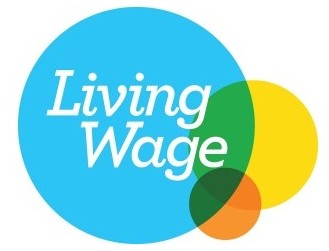Following the recent living wage increase, Communications Officer Sapphire Mason-Brown looks at the prevalence of low pay and the advantages of the living wage
On Tuesday, the new living wage was announced at £7.65 outside of London and £8.80 within the capital. This comes after the minimum wage was increased to £6.31 last month.
The living wage is calculated annually with separate rates for those living outside London (by the Centre for Research on Social Policy at Loughborough University), and for those living in the capital city (by the Greater London Authority’s Living Wage Unit). The living wage is predicated on one simple fact: vast numbers of people in work do not earn enough to live on. The introduction of the minimum wage in 1999 has acted as a buffer against some of the most extreme forms of low pay but, with living standards rising and minimum wage increases failing to keep up with the rate of inflation, the minimum wage is not a buffer or a solution to low, insecure pay.
The Resolution Foundation’s report, Low Pay Britain 2013, found that the number of people being paid less than the living wage has rocketed in recent years, increasing from 3.4m in 2009 to 4.8m in April 2012, making up 20% of the workforce.
Low pay is a significant contributor to in-work poverty, and the institute for Fiscal Studies’ analysis demonstrated that hourly pay is a better predictor of in-work poverty than hours of work. However, the characteristics of a person’s job does contribute to the risk of low pay.
Low Pay Britain 2013 illustrated that some groups are more vulnerable to being in low pay than others:
- Women make up the majority of low paid workers whilst a recent report by the TUC illustrated that low pay amongst young women has trebled over the last 20 years.
- Low pay is higher amongst those in low- and middle-skilled occupations such as sales or customer services, as well as those on part time or temporary contacts.
- Older and younger workers are more likely to be paid below the living wage threshold.
- 16-20 year olds make up 83% of those in extreme low pay.
Current political discourse surrounding making work pay has continuously highlighted work as the best means of getting out of poverty. However, this is only possible if work pays enough for people to live on and if they are in secure roles with opportunities to progress. Without a living wage, in-work poverty persists and low wages will continually be subsidised by the taxpayer. Since launching in 2001, the Living Wage Campaign has won over £210m of additional wages, lifting 40,000 families out of poverty, and over 430 employers have been accredited as living wage employers.
The living wage benefits both workers and employers, as highlighted by joint research from the Queen Mary University of London and Trust for London. Employees are not only better able to provide for themselves and families but also reported that being paid a living wage allowed them to spend more time with their families. Living wage employers benefitted from having more positive and loyal employees as well as better retention rates.
However, despite the traction the campaign has gained thus far, there is still a way to go. To support the millions of people currently in low-paid roles, more employers need to join the existing 450 employers already committed to paying the living wage, and across different sectors. This comes at only a small cost to the organisations. A commitment to the living wage, alongside secure employment, provides the best means of lifting people out of in work poverty whilst at the same time creating better workplaces.

